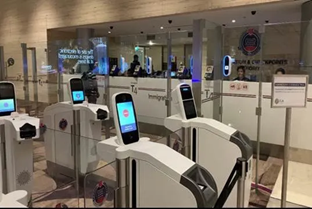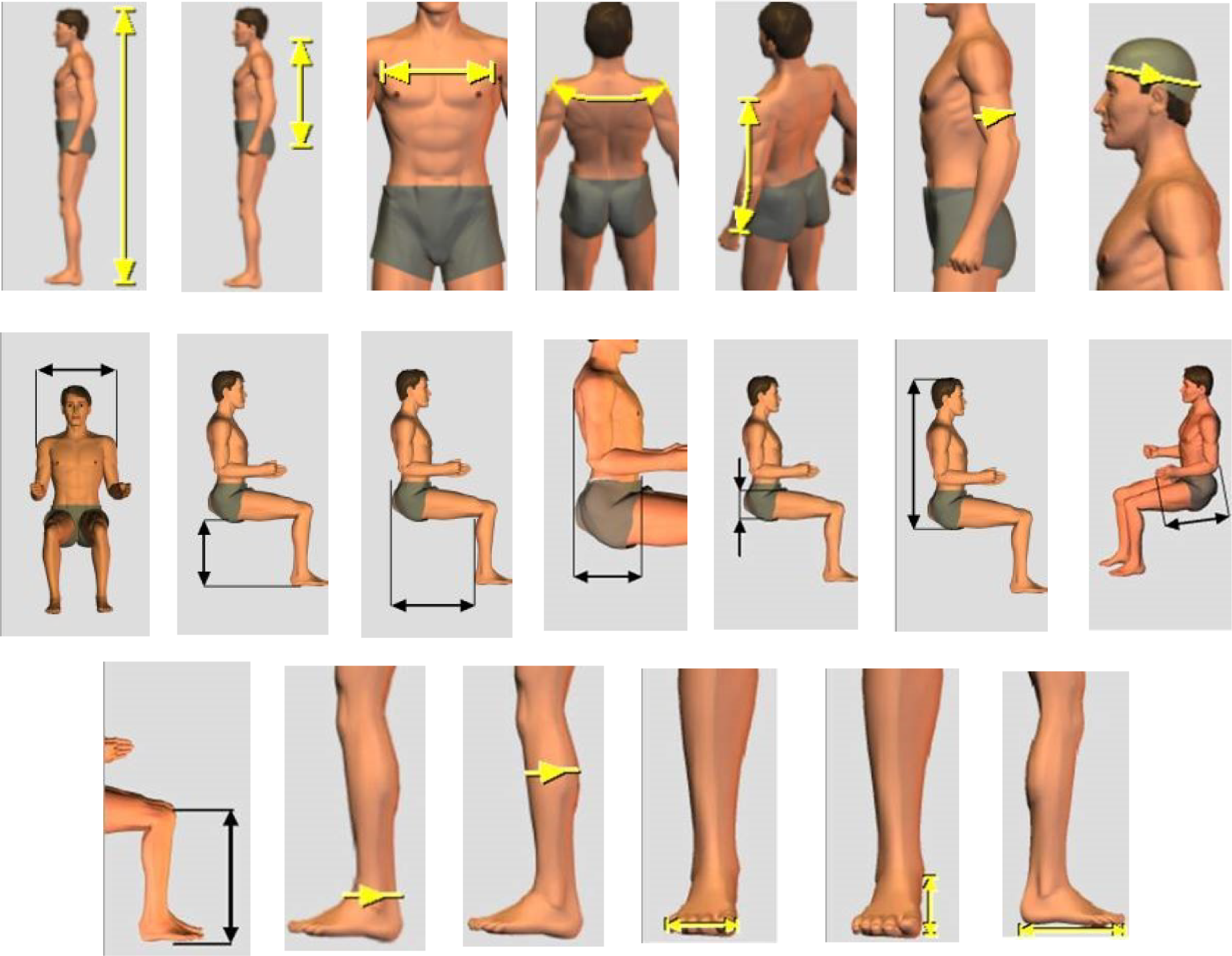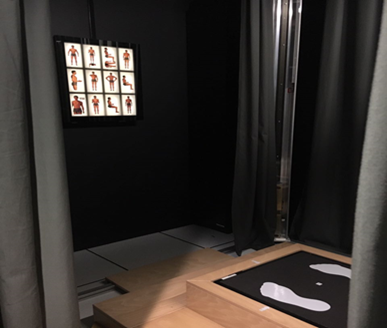
The Automated Border Control System gantries at Changi Airport Terminal 4 (Image Credit: HTX)
When Singaporeans resume their favourite pastime by the end of this year, greeting eager travellers at the borders are the Automated Border Control System (ABCS) gantries to ensure that immigrations clearance is as smooth and hygienic as possible. The marvel of biometrics science aside, just how do we determine the exact height to place the iris-detecting cameras or the width of the gantries? We tap into the important science of Anthropometry.
What is Anthropometry? Anthropometry is the measurement of the sizes, proportions, mobility, strength, and other factors that physically define human beings. Getting these measurements right is vital to the ergonomic design of HTX’s projects so that users – like antsy travellers – will have a more optimised, intuitive, and comfortable experience.
So how precisely do we measure people? Traditionally, researchers would use vernier calipers and measuring instruments to measure more than 60 points on an individual’s body. Other than lengths, researchers might also measure weight and muscle mass. To ensure accurate measurements, a researcher might spend up to three days just to measure one person!

Examples of some anthropometric dimensions taken using the 3D laser body scanner. (Image credit: HTX)
Because the average physique varies between different countries due to differences in gender, age, ethnic origin, nutrition, and social development, it’s imperative for a nation to build and update its own anthropometric database. In Singapore, anthropometric studies of the general population are usually done by universities like NUS and NTU. This national anthropometric data is then used to design public-facing technologies like the ABCS.
Apart from the ABCS, anthropometry is also applied to projects that aim to enhance the performance capabilities of HT officers. Within the Home Team (HT), HTX’s Human Factors and Simulation Centre of Expertise (HF&S CoE) does anthropometry specifically for HT officers so that our designs and developments can be custom-made for each HTD’s needs.
Instead of vernier calipers, we use a 3D Laser body scanner housed in the Human Performance Centre @HT Academy that can capture more than 200 dimensions of a person’s body within 15 seconds. With the scanner, HF&S CoE has collected the anthropometric data of several SPF, SCDF and SPS units and conducted percentile range and correlation analyses with it.

The 3D Laser body scanner (Image Credit: HTX)
With these anthropometric insights, we can then optimise workspace design, vehicular platforms, and attire to give officers have a better range of motion and workspace design that will allow them to carry out their daily operations more efficiently, comfortably, and safely.
These include SPF’s Command and Control Centres, the Next-Generation Fast Response Cars, SCDF’s Personal Protective Ensembles (PPEs), and the uniform design of different HT departments.
The Next-Generation Fast Response Car. (Photo Credit: SPF)
So, the next time you see a Home Team officer's uniform or pass through the ABCS gantry on the way to a holiday, know that HF&S CoE has meticulously ensured that it will fit like a glove and measure up to its tasks.

